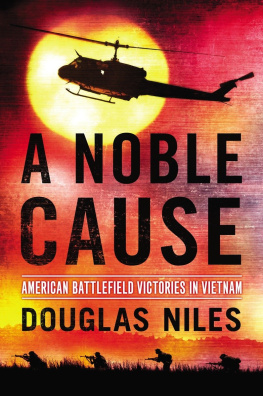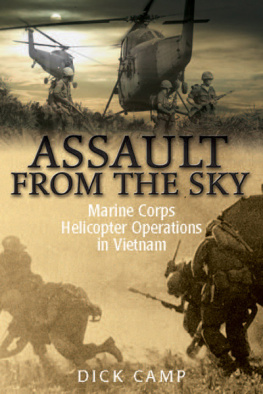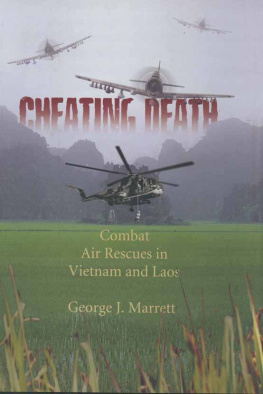This edition printed 1999
Copyright 1987 by Keith William Nolan
Published by Presidio Press
505 B San Marin Drive, Suite 300
Novato, CA 94945-1340
All rights reserved. No part of this book may be reproduced or utilized in any form or by any means, electronic or mechanical, including photocopying, recording, or by any information storage and retrieval systems, without permission in writing from the publisher. Inquiries should be addressed to Presidio Press, 505 B San Marin Drive, Suite 300, Novato, CA 94945-1340.
Library of Congress Cataloging-in-Publication Data
Nolan, Keith William, 1964
Death Valley.
Bibliography: .
1. Vietnamese Conflict, 19611975CampaignsVietnamHiep Duc Valley. 2. Vietnamese Conflict, 19611975Regimental historiesUnited States. 3. United States. Marine Corps. Marines, 7thHistory. 4. United States. Army. Infantry Brigade. 196thHistory. 5. Hiep Duc Valley (Vietnam)History. I. Title.
DS557.8.H54N65 1987 959.704342 86-30478
eISBN: 978-0-307-80205-7
v3.1
To Kelly
Sometime after August of 69, a grunt walked through the American Division Headquarters compound in Chu Lai. He wore no helmet now that he was in from the bush, and his hair was dirty and uncombed. He had unauthorized sideburns and a handlebar mustache. He held his M16 rifle over his shoulder like a tramp stick, and his faded, grimy fatigue shirt hung open. A green sweat towel was draped around his neck, and his trouser cuffs were rolled up, exposing muddy and cracked jungle boots. A starched major approached and questioned his unmilitary appearance. He smiled, The wars over. Weve got to start acting like garrison soldiers now. The young grunt pulled a grubby envelope from his pocket. He shook it at the major. What do you mean the wars over? Three months ago, seven of us were at LZ Baldy and now five are dead! But the major was still smiling, Well, lets say its slowed down quite a bit.
Contents
Preface
T hough one of my first books, and that does not imply great things, Death Valley, originally published in 1987, was, nevertheless, the best of my early campaign histories. I think the British magazine Military Illustrated got it right when it observed in its review of Death Valley that the author is no English stylist, but that the relentless accumulation of small-scale detail has a numbingly powerful effect.
This is a book about war at the grunt level, and another reviewer was good enough to remark that the story is told straight.
In telling it straight, I had to acknowledge some depressing realities. There were many good soldiers in the 7th Marines and the 196th Infantry Brigade of the Americal Division, the units described in Death Valley. During the 1969 Summer Offensive, the campaign recounted here, they fought the good fight against the tough, aggressive regulars of the North Vietnamese Army. However, individual heroism was not enough. Morale as a whole was poor, even in some of the Marine units, and to quote the Brits again, the Americal Division troops in particular were mostly unwilling conscripts, badly trained, badly led, badly motivated and therefore, consistently outfought by an enemy who lacked anything approaching the Americans firepower but had ten times their determination.
The summer of 69 was a terrible time to be a grunt in the shimmering-hot rice paddies of the Arizona Territory, or the Hiep Duc and Song Chang Valleys of Quang Tin Province, the three locales where the combat action of Death Valley took place. James Webb, who immortalized the era and the first of these places in his novel Fields of Fire, tells us that four and a half years after the first U.S. infantry units landed in Vietnam, a year and a half after the shattering of the national will during the Tet Offensive, there was no great effort for anything anymore, only thousands, no, millions, of isolated, individual wars.
The goal for the grunts was survival, not victory. It could hardly have been otherwise. Only two months before the beginning of the 1969 Summer Offensive, President Richard Nixon had formally unveiled his Vietnamization policy in which U.S. combat units would be gradually phased out and replaced by South Vietnamese units. As a result, noted yet another reviewer of Death Valley, disillusionment had set in among the riflemen, none of whom wanted to be the last man killed in a war they werent going to win.
The whole army had short-timers fever. Units with good leaders continued to perform competently, sometimes even with the aggressive elan of the early yearsa classic frontal assault by the 1st Battalion, 7th Marines on an entrenched NVA position is described herebut the first recorded combat refusal of the war also took place during the fighting recounted in Death Valley. Frontal assaults were going out of style, while incidents of individual and group refusals would become almost commonplace as the war ground uselessly on.
Modern infantry combat is inherently brutalizing. The enemy is naturally dehumanized. It was worse in Vietnam where the grunts, knowing they were expendable, forgotten, and doing what they did to no good end, had only their buddies to depend on and believe in. Everyone else was the enemy. At times, the comradeship that was the wars only redeeming quality caused some of its worst crimesacts of retribution for friends who had been killed, writes Philip Caputo in A Rumor of War. The Americal Division had My Lai. The Marines had Son Thang, a hamlet in which night ambush team from the same 1st Battalion, 7th Marines that had performed so well during the 1969 Summer Offensive went on a revenge-minded killing spree that left sixteen dead women and children in its wake. Gary Solis tells the story in meticulous and excruciating detail in Song Thang, An American War Crime. The massacre took place six months after the Summer Offensive and Solis notes that the heavy combat of that campaign had not only molded the battalion into a well-oiled war machine, but had also imparted a cold and efficient aggressiveness in which small scale atrocities were not unusual. Generals will deny it, colonels and majors may doubt it, but any captain or lieutenant and any enlisted infantryman who was there will confirm it. Thats just the way it was.
More insidiously, the drug, race, and generational problems tearing the country apart back home, problems which had begun creeping into the war zone after Tet of 68 and the assassination of Martin Luther King, were firmly entrenched in the larger base areas like those at Da Nang and Chu Lai by the time of the 1969 Summer Offensive. A new word came into common usage that yearfraggingand there were more fatal attacks on U.S. officers by U.S. troops in 1969 than in any other year of the Vietnam War. Fragging was generally a rear-echelon phenomenon, a way for drug users and Black Power militants to carve out some space for themselves inside the Green Machine.
Morale was always higher in the field than in the rear, and in Death Valley there are many heart-breaking examples of young grunts, kids really, as their barely-older lieutenants called them, tearing themselves apart to reach a wounded man or go after a machine gun that had their squad pinned down. When they had every reason to tuck themselves behind a paddy dike and play turtle, there were still soldiers who gave it their all. Too bad it was all for nothing. Too bad they were fighting on ground of the enemys choosing.











